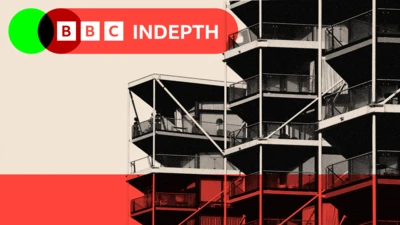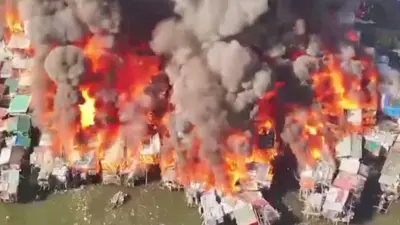We've updated our Privacy and Cookies Policy
We've made some important changes to our Privacy and Cookies Policy and we want you to know what this means for you and your data.
Carbon component blamed for Vega rocket loss
Image source, Arianespace
- Author, Jonathan Amos
- Role, ≥…»ÀøÏ ÷ Science Correspondent
The fault that resulted in the loss of Europe's premier small rocket, Vega-C, during a launch in December has been identified by investigators.
They've traced the problem to the failure of protective material that was lining the throat of an engine nozzle.
This led to a drop in combustion pressure and acceleration.
When it became clear Vega-C wouldn't make it to orbit, a self-destruct command was sent, which also annihilated the satellites onboard.
These were two high-resolution Earth imagers built by the aerospace company Airbus.
The European Space Agency (Esa) said on Friday the measures needed to address the failure meant that Vega-C would not fly again until later this year.
When it does finally return to the launch pad, it will be given the task of lofting Sentinel-1C, an eagerly awaited radar spacecraft owned by the European Union.
This Sentinel is required to fill a significant gap in Europe's observing capability.
"Sentinel-1C is indeed a very precious payload," confirmed Esa director general Dr Josef Aschbacher.
"But I think it confirms to the community that, first of all, we have well understood the problem, and, secondly, that the measures we're putting in place are well accepted as the right ones, and therefore we have full confidence that we will succeed," he told ≥…»ÀøÏ ÷ News.
The rocket stage, or segment, that failed in December, was the Zefiro 40, which ignites about 144 seconds after lift-off.
It was the only stage to use this particular carbon-carbon throat insert, manufactured in Ukraine. Nonetheless, a programme is now being put in place by the Italian rocket producer Avio to ensure components right across the Vega-C vehicle meet the highest quality possible in future.
A new insert material will be sourced, and a full-duration firing of a Zefiro 40 segment will be conducted on the ground to prove its robustness.
Image source, ESA
Vega-C is an upgraded version of an earlier vehicle simply known as Vega. Both have a total of four stages that they burn in sequence as they climb higher and higher into the sky.
Crucially, the old Vega has a different second stage and this will allow for an earlier flight.
"It will be by the end of summer," said Stéphane Israël, the CEO of Arianespace, the company that operates the rocket.
"We target to have two main (satellite) passengers, and some smaller satellites. We will give more information on these passengers in a few weeks."
Satellite operators in Europe were already chasing a limited number of rocket rides, and December's failure has complicated their options still further.
The war in Ukraine, and the resulting western sanctions, mean Russian Soyuz rockets - a mainstay of European space operations - are no longer on the market.
The Ariane-5, Europe's biggest rocket, has only two more flights this year before it is withdrawn. And the Ariane-6 follow-on is not yet ready to fly.
The shortage of rides recently prompted the European Space Agency to purchase two American launches.
Its Euclid telescope and Hera asteroid missions will go up on SpaceX Falcon-9 vehicles in 2023 and 2024 respectively.
Top Stories
More to explore
Most read
Content is not available








